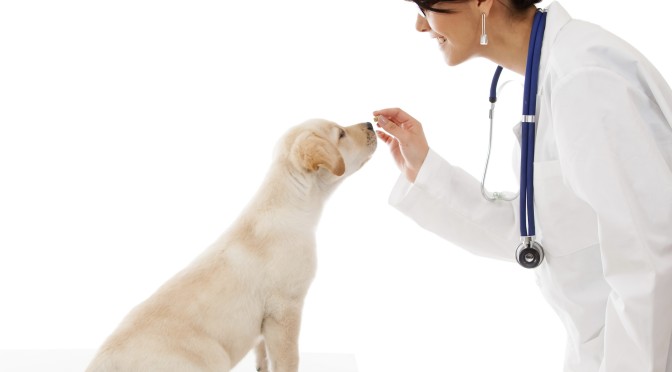When you change your behavior, your dog can change his!
I came up with a specific way to feed treats so that it’s clear to my dog when he’s allowed to take the treat. Humans talk a lot to dogs, but dogs are actually very visual, and they usually understand hand signals better than vocal cues. Try this out – your dog should learn to see the difference very quickly.
Two Positions
The hand position is a discriminative stimulus. In other words, it tells the dog what his options are — such as when he should make an effort to earn a treat and when it’s pointless.
- Yours position — fingers and palm up (dog can take the treat).
- Mine position — fingers and palm down (treat is not available).
Training geeks: you can get fancy and add a vocal release cue like a word or the dog’s name to the Yours position for a compound cue. I’m not sure it’s necessary, but it could come in handy.
I’ve always just taught this only with a vocal cue, Take It, and my hand position was irrelevant. I’m finding that having a hand position that means Take It is actually really, really useful.
Benefits and Uses:
- Puppy biting fingers when you feed treats.
- Use the Yours position to teach other tricks via luring (your dog follows your hand).
- Use the Mine position to teach Stay, to keep your dog from stealing your food, and prevent going after hands.
- Impulse control for your dog.
- Use as a silent “clicker” or marker signal to train other behavior. Especially great with deaf dogs or when you need to train quietly.
- Teaches you to pay attention to what your body and hands are saying to your dog.
Other uses? Variations? Please comment below or on my YouTube channel!
How Do I Teach This?
The short answer is just don’t feed unless your hand is in the “Yours” position.
In the video below, I’m teaching my puppy Pinto Bean the Yours/Mine hand signal.
After your dog starts to get the concept, do some discrimination training help your dog really understand the meaning of this signal. Help him rule out other information from the environment so that you know he’s paying attention to the position of your hand, and only that. Otherwise, your dog may be picking up on something else to figure out what to expect.
- Practice in different locations
- Have different types of treats in your hand
- Use it as a marker signal to train other behaviors
- Have the rest of your body in different positions
- Add other kinds of movement
- Do the exercise without appearing to look at your dog
- Add distractions
- Do the exercise with both hands (note the rotation is opposite)
- Have other people do this exercise, so it’s not just you
Here’s a clip of me using this with Bean to work on Stay:
You’ll also find useful tips in my Ahimsa Dog Training manual or one of the many courses taught by world-class animal behavior instructors in my online dog training school.
